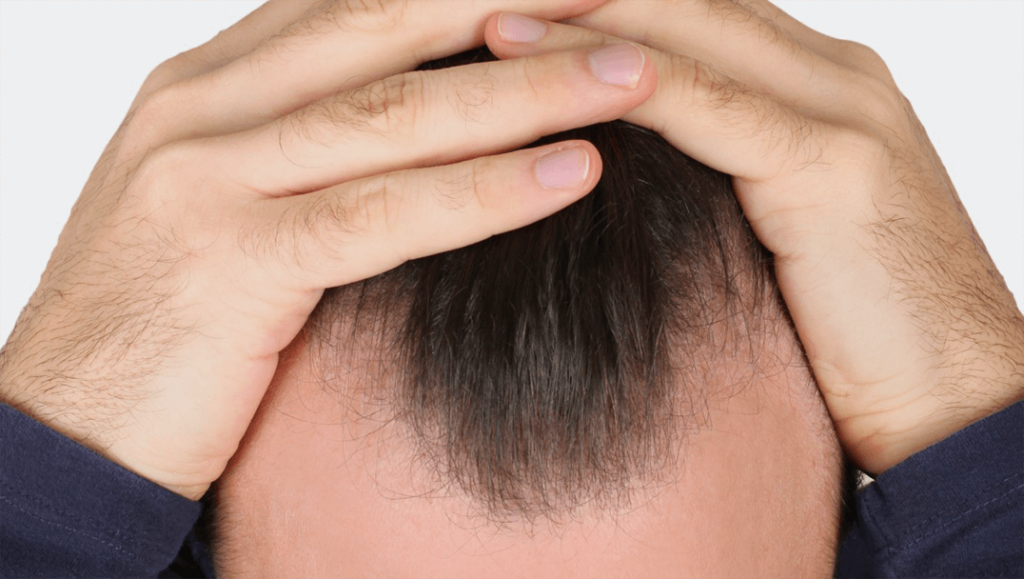


Hair loss is one of the most disappointing cosmetic issues that can happen to any of us. Hair loss can lead to a drastic deterioration in confidence. For those of us looking to reverse the effects of hair loss, PRP therapy is a non-invasive option.
PRP therapy was developed due to new medical research and the advancement of technology within the medical community. Scientific studies have recently been published discussing PRP hair restoration technique as an all-natural and non-invasive procedure that has been found to stimulate the growth of hair and to reduce the effects of thinning.
I do recommend this office to everyone! Very nice and professional staff!! I got treatment from Sierra. She is the best! Explained everything before the procedure and answered to all my questions.Thanks to her I saved money ,because she suggested me to do different procedure , than I was requesting, much cheaper one.
And Dr. C is the best doctor ever! Very caring and attentive!! Makes you feel like you are the most important person/patient ever :))
The results are beyond an expectation.
Thank you Dr.C !!! -Anonymous
PRP Therapy works based on restoring growth factors in the blood. Human blood contains mesenchymal stem cells and autologous blood products. These are essential to regenerate scalp tissue. Once the scalp tissue is regenerated, the hair follicles can produce the necessary hair growth.
PRP has been the topic of medical literature from both the United States and Europe. Not only is the product heralded as a revolutionary way to stimulate and restore hair growth, but it is also one of the safest cosmetic hair growth options on the market today.
Currently, PRP is in its early stages of scientific research and subsequent FDA approval. It is not meant to replace the current FDA-approved options such as DHT blockers (example: Propecia) and Minoxidil. Regardless, it is still very promising for those who are struggling with hair loss.
The next important thing to consider about PRP is how the procedure is performed. The procedure is non-invasive and very tolerable. To begin with, upon visiting the office, a medical professional will draw blood. Afterward, the medical staff will spin the blood through a centrifuge, and the PRP is separated from the rest of the blood.
To spin and remove the PRP molecules from the blood, a highly advanced gel technology. Once the centrifugation process is complete, the vital growth proteins from your blood are separated.
DRC360 will apply topical numbing and a nerve block to make the treatment as comfortable as possible. DRC360 will inject your scalp with platelet-rich plasma (PRP). The PRP stimulates the follicles so that your hair can regrow.
For the most advanced results, some patients choose to have PRP therapy performed monthly for four months. This ensures that the hair follicles remain stimulated and that the hair growth is progressing as it should be. DRC360 also gives the option to add stem cells to the treatment as an advanced technique.
PRP, or platelet-rich plasma, essentially contains platelets that are key to stimulating hair follicles to generate hair growth. They mainly target the Dermal Papilla, which is a component of the hair follicle. When used to regenerate hair growth within follicles, the platelets promote healing and the formation of new cell growth. In addition, the platelets also accelerate the rate and degree of regeneration so that you can expect to see results promptly. PRP is an ideal component of hair restoration because it is highly effective in stimulating inactive hair follicles, causing them to revert to the growth phase.
PRP for hair loss is by far the best of any other treatments offered today. Of course, it is also important to understand that results will vary, and there is never any guarantee of success.
Overall, PRP is an effective non-surgical procedure that works well to stimulate the follicle to induce hair growth. It reverses hair thinning, and it causes the growth of new hair.
The best candidates for PRP treatment do not have a history of Alopecia areata or scarring Alopecia.
Once you have found the treatment you would like to receive or need more specific advice, we welcome you to visit us to discuss your cosmetic goals.
* Individual results may vary